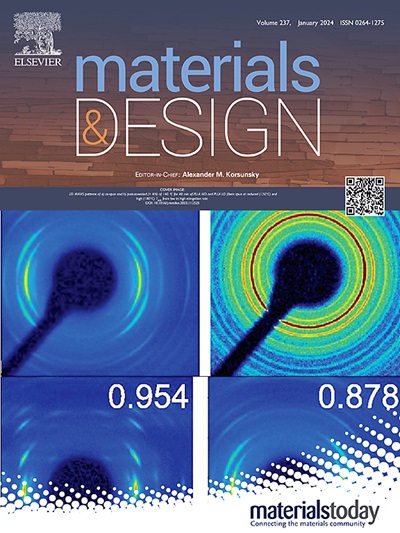Phase equilibrium of the Fe2O3-TiO2 system
IF 7.6
2区 材料科学
Q1 MATERIALS SCIENCE, MULTIDISCIPLINARY
引用次数: 0
Abstract
This study focused on the high-temperature phase equilibrium of the Fe2O3-TiO2 system by employing the classic phase equilibration and quenching method, X-ray diffraction, electron-probe microanalysis, and thermal analysis experiments. The solubility of the hematite, pseudobrookite, and rutile phases as the equilibrium temperature rose from 1100 °C to 1450 °C was determined. Besides, the solubility of TiO2 in the spinel phase at 1450 °C was verified by experiments. A comprehensive comparison with the phase diagram optimized by Panda indicates that the solubility of solid solutions involved in the Fe2O3-TiO2 system should be larger than the predicted one. Additionally, the ordered rutile phase was transformed into the high-temperature rutile-derived crystallographic shear structure at 1400 °C with Fe2O3 higher than 15 mol%. Furthermore, the eutectic reaction of liquid → pseudobrookite + rutile occurred at 1512 °C. The liquidus was determined to be 1512 °C and 1535 °C at 30 and 75 mol% of TiO2, respectively. These measured phase equilibrium data are expected to provide reliable input for future thermodynamic reassessments of the Fe2O3-TiO2 system within the CALPHAD framework.

Fe2O3-TiO2 体系的相平衡
本研究采用经典的相平衡和淬火法、X 射线衍射、电子探针显微分析和热分析实验,重点研究了 Fe2O3-TiO2 体系的高温相平衡。测定了赤铁矿、假绿泥石和金红石相在平衡温度从 1100 °C 升至 1450 °C 时的溶解度。此外,实验还验证了 1450 ℃ 时尖晶石相中 TiO2 的溶解度。与 Panda 优化的相图进行综合比较后发现,Fe2O3-TiO2 体系中固溶体的溶解度应大于预测值。此外,当 Fe2O3 的含量高于 15 摩尔%时,有序的金红石相在 1400 °C 时转变为高温金红石衍生结晶剪切结构。此外,在 1512 ℃ 时发生了液态 → 假白云母 + 金红石的共晶反应。在 TiO2 含量分别为 30 摩尔%和 75 摩尔%时,液相的温度分别为 1512 ℃ 和 1535 ℃。这些测得的相平衡数据有望为今后在 CALPHAD 框架内对 Fe2O3-TiO2 系统进行热力学重新评估提供可靠的输入。
本文章由计算机程序翻译,如有差异,请以英文原文为准。
求助全文
约1分钟内获得全文
求助全文
来源期刊

Materials & Design
Engineering-Mechanical Engineering
CiteScore
14.30
自引率
7.10%
发文量
1028
审稿时长
85 days
期刊介绍:
Materials and Design is a multi-disciplinary journal that publishes original research reports, review articles, and express communications. The journal focuses on studying the structure and properties of inorganic and organic materials, advancements in synthesis, processing, characterization, and testing, the design of materials and engineering systems, and their applications in technology. It aims to bring together various aspects of materials science, engineering, physics, and chemistry.
The journal explores themes ranging from materials to design and aims to reveal the connections between natural and artificial materials, as well as experiment and modeling. Manuscripts submitted to Materials and Design should contain elements of discovery and surprise, as they often contribute new insights into the architecture and function of matter.
 求助内容:
求助内容: 应助结果提醒方式:
应助结果提醒方式:


